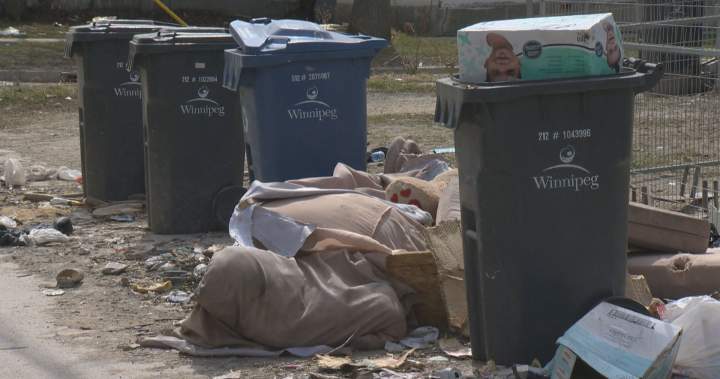In a decisive move to combat persistent garbage scavenging issues, Winnipeg’s downtown core is undergoing a significant transformation with the introduction of locked garbage bins. The initiative, launched this week, aims to address the growing concerns about waste management and public safety that have troubled the area for years.
Walking through downtown Winnipeg on a typical morning used to reveal a troubling sight: garbage strewn across sidewalks and alleyways after overnight scavenging. The scattered debris not only created unsightly conditions but also posed health risks to both scavengers and pedestrians navigating the area.
“What we’re seeing is individuals going through the garbage looking for food, recyclables, or other items of value,” explains Winnipeg City Councilor Sherri Rollins. “This creates a cascading set of problems—from public health concerns to increased clean-up costs for the city.”
The new locked bins feature specially designed openings that allow for waste disposal while preventing unauthorized access to the contents. City officials have distributed over 75 of these secure receptacles throughout the downtown area in this initial phase, with plans to expand the program based on early results.
Business owners in the downtown core have largely welcomed the initiative. Maria Gonzalez, who operates a café on Portage Avenue, has dealt with garbage issues for nearly a decade. “Every morning, I would arrive to find our bins tipped over and trash scattered everywhere. It became part of my daily routine to clean up before opening,” she shares. “These new bins could be a game-changer for downtown businesses.”
The program represents a CO24 Politics balancing act for city officials, who acknowledge the complex social factors behind garbage scavenging. Many individuals who search through waste bins do so out of economic necessity, looking for recyclables or discarded food items. Critics argue that the locked bins address a symptom rather than addressing the underlying causes of poverty and homelessness in Canada.
In response, the city has partnered with several local organizations to develop complementary programs aimed at supporting vulnerable populations. These include expanded food bank services, bottle collection programs, and employment initiatives designed to provide alternative sources of income and support.
“This isn’t just about cleaner streets,” notes community advocate Jason Whitfield. “We need to ensure we’re not criminalizing poverty. The locked bins make sense from a public health perspective, but they must be part of a broader strategy to address the needs of people who rely on scavenging.”
The $1.2 million initiative includes not only the purchase and installation of the specialized bins but also an enhanced collection schedule and dedicated monitoring to ensure the system functions effectively. City data suggests that downtown clean-up costs related to scattered garbage have exceeded $800,000 annually in recent years, making the investment potentially cost-effective in the long term.
Other Canadian cities including Vancouver and Toronto have implemented similar programs with mixed results. The key difference in Winnipeg’s approach appears to be the extensive community consultation conducted before implementation, which helped identify specific placement locations and design features most likely to succeed in the local context.
As this program unfolds across downtown Winnipeg, residents and visitors will be watching closely to see whether locked garbage bins represent a meaningful solution to a persistent urban challenge, or merely a stopgap measure. The ultimate question remains: can infrastructure changes like these effectively address complex social issues, or do we need more comprehensive approaches to create truly sustainable cities for all residents?























